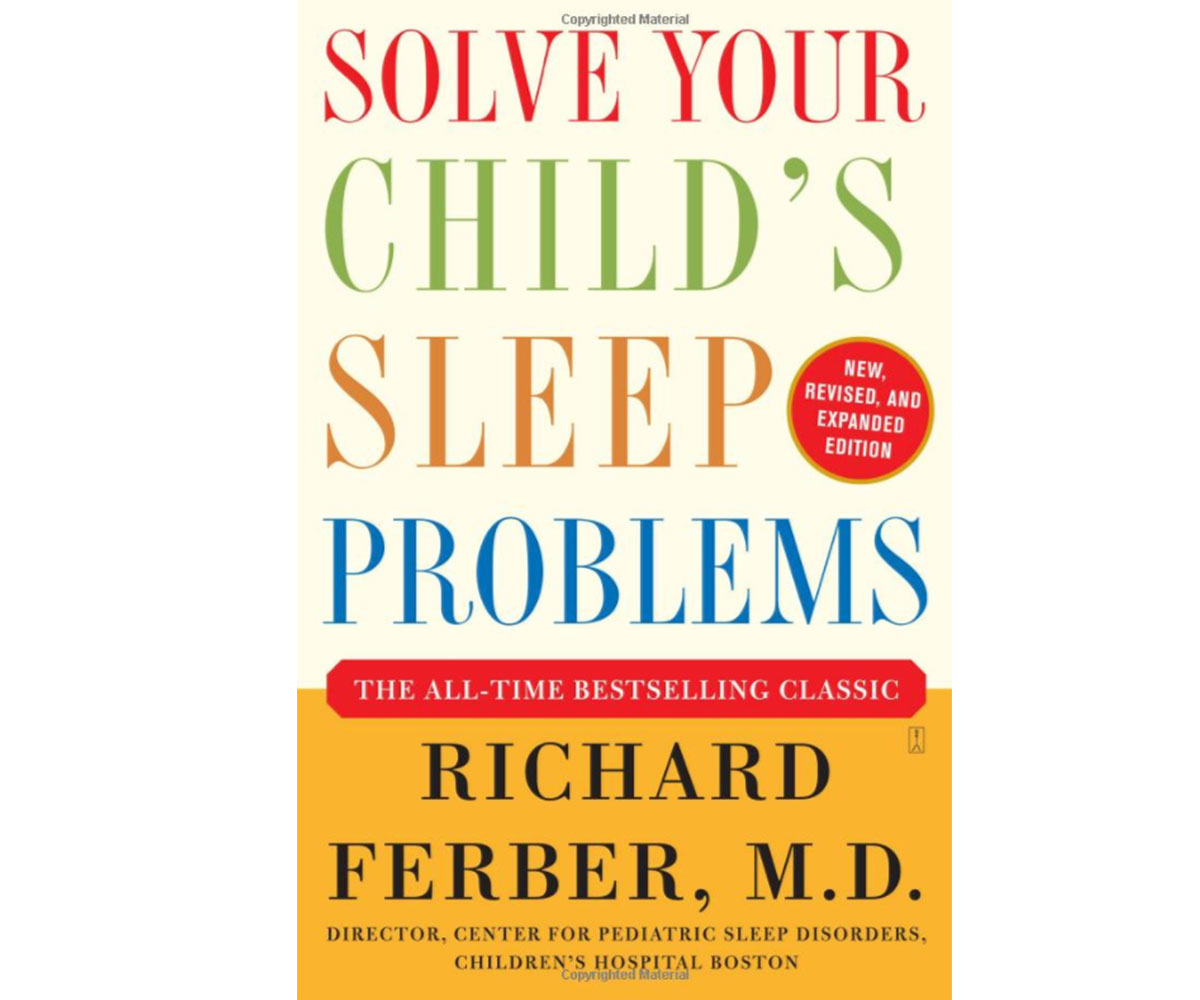

$16.99
Richard Ferber’s “cry-it-out” method is one of the most well-known (and controversial) sleep training techniques today. Ferber has become so closely associated to it that it’s often called “Ferberizing.”
Ferber believes that a child can be taught to soothe himself to sleep when he is emotionally and physically ready, typically between 3 and 5 months of age. He recommends following the same bedtime routine every night, putting your child to bed while still awake, and leaving the room for a predetermined amount of time, even if your child is crying. The book explains a process by which you return to comfort your baby by patting him (not by picking him up), leave again for a longer period of time, and continue the process until your baby is asleep. This routine is known as “progressive waiting.”
While many parents criticize this method for being too harsh, recent research suggests it is not harmful. Ferber believes your baby will learn to soothe himself to sleep within a few days to a week.
Buy on Amazon

$24.95
Similar to Ferber’s method, the Weissbluth method aims to teach healthy sleep habits by helping your baby learn how to put herself to sleep. It attempts to teach parents how to recognize their child’s sleep cues and acting accordingly to each child’s individual temperament. A consistent routine is also a main component in this technique.
Weissbluth believes that your approach to sleep-training should depend on how laid-back or strong-willed your child is. An easygoing baby can be taught to self-soothe with a no-cry or modified cry-it-out method similar to Ferber’s. A stubborn baby may need a stricter approach like the “extinction” method.
The extinction method begins with you recognizing that your baby is ready for bed. Once sleep cues start, Weissbluth recommends soothing your baby by swaddling, rocking, or nursing, and placing her in bed while still awake. Once your baby has been put in bed, leave the room and don’t go back in, even if your child is crying. The extinction method calls for you to let your baby to cry it out indefinitely at bedtime, and for up to an hour at nap time. This strategy isn’t favored by all parents, since the indefinite cry time can be hard to handle (and exhausting!)
Buy on Amazon

$14.00
Mindell is another proponent of the cry-it-out method, but focuses more on consistent check-ins than the extinction method. The idea is that if you wait to check on your child until he is having a full-blown tantrum, he will learn that cranking up the tears is what will get you to come get him. So Mindell advises parents to check in briefly and to refrain from picking him up. For example, a simple pat and shush, or a few soothing words and then quietly leaving the room should be enough. This consistency will help your child learn to put himself to sleep, and Mindell believes your child will begin sleeping through the night within two or three weeks.
Buy on Amazon

$15.95
Kim West is known for The Sleep Lady Shuffle, a method that encourages your baby to put herself to sleep using a gentle cry-it-out technique. West believes that only babies six months or older should be sleep trained.
The Sleep Lady Shuffle, also known as a “camping out” method, calls for you to put your child to bed while still awake, and verbally comforting her while sitting in a chair next to her crib. Every few nights, move your chair a little farther out of the room, while continuing to speak soothingly your child. The final step has you sitting outside of her room, out of view.
West asserts that within a couple weeks of using her strategy, you should be able to put your baby to bed and leave the room, and your baby will know how to put herself to sleep.
Buy on Amazon

$14.99
On the opposite end of the cry-it-out technique is Sears’ method that encourages attachment parenting, and focuses on gentle, stress-free ways of helping a baby get to sleep.
Dr. Sears calls for a consistent nap and bedtime routine (surprise!), and enjoyable rituals before bed to help your baby recognize that it is bedtime. He believes the routine of a “warm bath, to warm arms, to warm breast, to warm bed” helps put a child to sleep. He says to keep your baby warm and close until he is asleep, so he doesn’t feel like he is falling asleep alone.
Sears is an advocate of cosleeping (also known as shared sleep) — an act that means sleeping with your baby within arm’s reach, either in your own bed, in a cosleeper bassinet attached to the bed, or with the crib next to your bed. Parents who use this method believe shared sleep helps their baby fall asleep faster, stay asleep longer, promotes breastfeeding, and helps build an emotional bond between mom and baby.
Buy on Amazon

$16.95
Elizabeth Pantley is another advocate of the no-cry approach to sleep training. She believes in a gentle and gradual approach to sleeping through the night that is customized to your baby’s needs.
Like Sears, Pantley believes in attachment parenting and a consistent nap and bedtime routine. She believes you should rock and feed your baby to a point or drowsiness before putting him down. She also believes you should respond immediately to his cries. Her six-phase process to helping your child learn to sleep in his crib requires the use of sleep logs, nap logs, and night-waking logs to help you understand your baby’s natural sleep cycle.
The “Persistent Gentle Removal System” is her plan to help your baby fall asleep on his own and revolves around his bedtime feeding. She suggests a system of gently removing him from bottle or breast when he gets drowsy and he will eventually learn to fall asleep on his own.
Pantley’s method is dependent on a strict routine. It takes a lot of patience, but many believe it is worth it for the no-cry aspect.
Buy on Amazon

$20.00
Hogg’s technique is a gentler method than a cry-it-out technique that still encourages your baby to learn how to put herself to sleep.
Hogg recommends following the “E.A.S.Y” plan when getting your baby on a routine — eat, activity, sleep, and you. Essentially, your baby eats when she wakes up, plays and is active for a certain amount of time, and then while she sleeps, you rest and take care of yourself.
Once your baby is 6 months or older, Hogg recommends using the Pick-Up-Put-Down (PUPD) method. It requires you to put your baby to sleep awake and to walk out of the room. If she cries or fusses, walk back in the room and pick her up. As soon as she stops crying, put her down and leave the room. Continue this process until your baby puts herself to sleep.
Although this method requires a lot of patience, Hogg believes that eventually, your child will learn how to put herself to sleep alone.
Buy on Amazon





